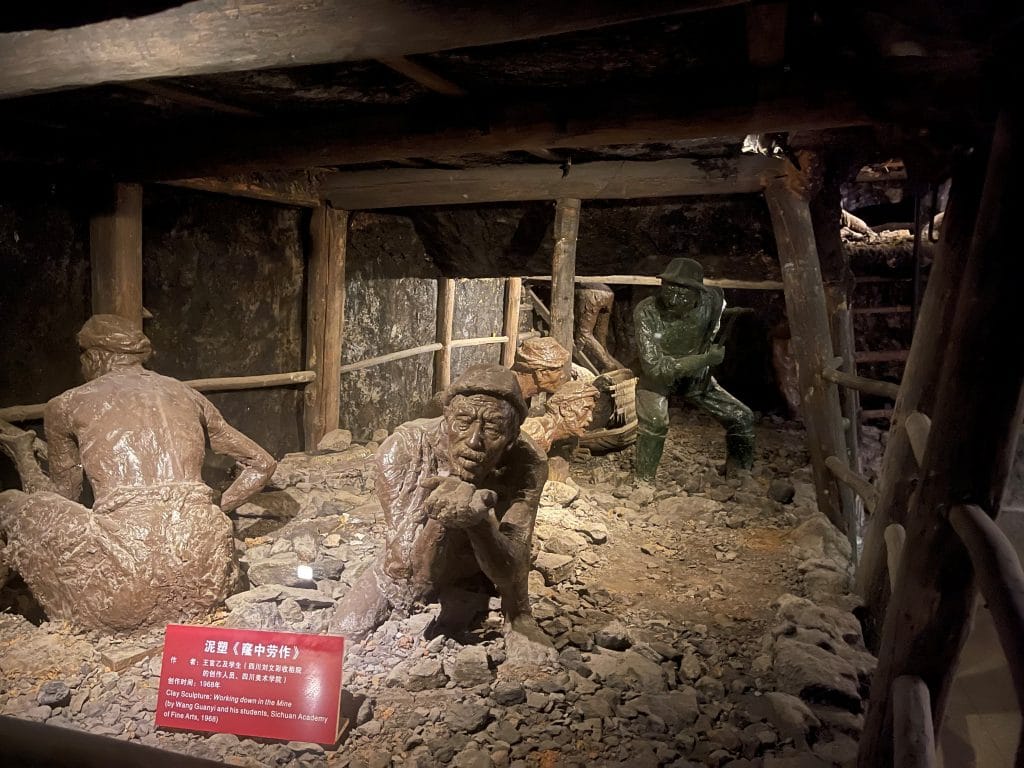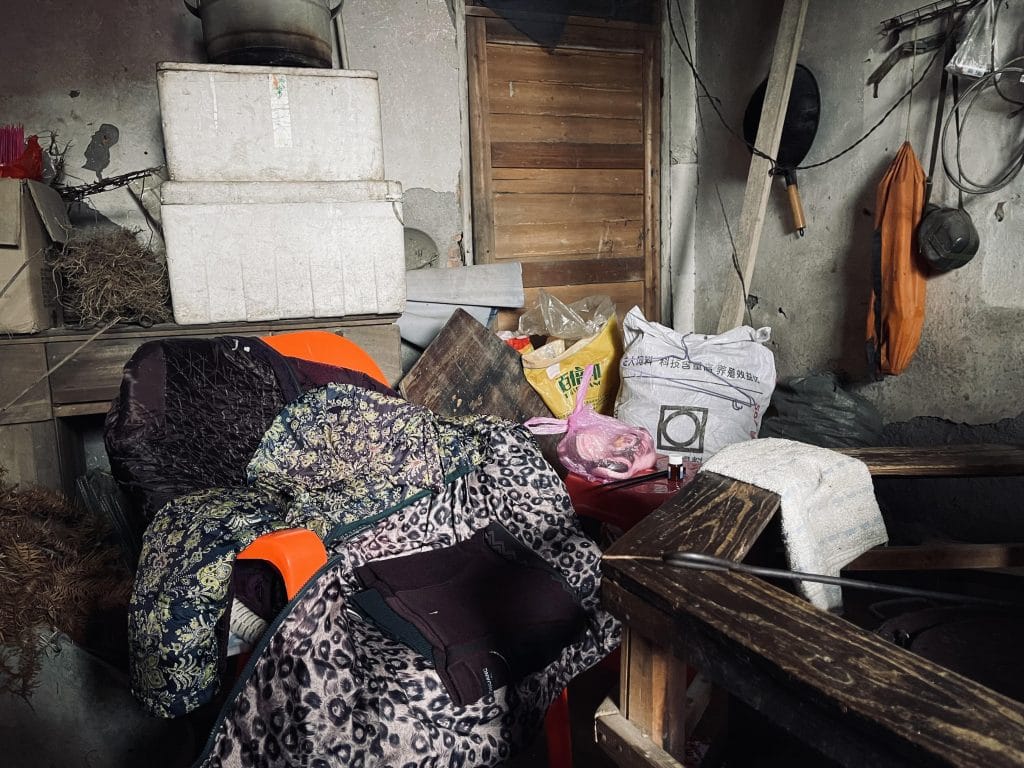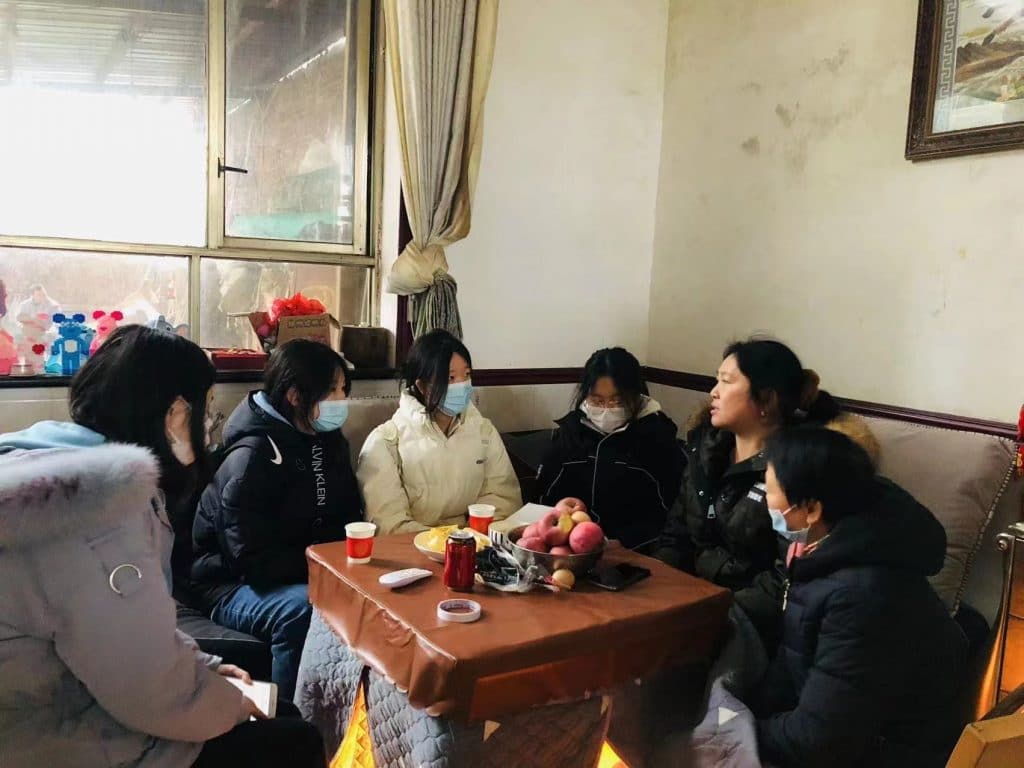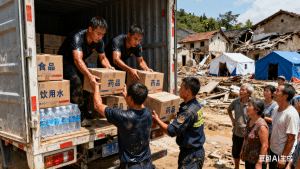“I cannot understand why misery would be like dominoes, with one following the other,” said a volunteer helping families impacted by pneumoconiosis.
The volunteer was speaking in a rural county of Hunan Province in 2017. Shortly before a group of volunteers arrived there, a patient surnamed Zhou passed away. He was in his forties and left behind an eight-year-old son, an elderly mother, and a middle-aged wife. The latter was born blind and had previously battled breast cancer. The gray-haired mother clutched her son’s photo, trembling in despair. Many of the volunteers were left in tears.
The case provides a good example of how pneumoconiosis can prematurely terminate the family life cycle.

What is a family life cycle?
Similar to individuals, families have life cycles. And the cycles begin when the family is first bonded and end when the family disintegrates. The family life cycle was first mentioned by demographer Paul C. Glick in 1947. The whole life cycle is divided into six stages according to the ages of the family members, gradually fading out when the family members get older.
The whole family is continuously changing, influenced by the external environment, culture, community, and other factors. The psychologist, Meng (2021), claims that family relations are also influenced by the development of family members and the changes in their interrelationships. Therefore, as it develops, the family is constantly changing and has to re-adapt and adjust to changes from the outside – such as pneumoconiosis.

How does pneumoconiosis impact the family life cycle?
People often see families impacted by pneumoconiosis as being “fragile”. “My wife has been busy doing part-time jobs in Pingxiang, so actually, we have lived apart for almost five years, with little communication. Nor did my children come to see me often,” said a patient at Chishan Rehabilitation Center.
The potential for disintegration is inevitably higher in pneumoconiosis families than in healthy families, with the illness likely to interrupt the normal formation-expansion-completion-maintenance-termination cycle.
“There are tens of millions of such families that involve merely one person (the pneumoconiosis patient). Some of the patients have no children, some have and are separated from their children. But they don’t care. And the wife is nothing more than a wife. Under these circumstances, the wife has to work to maintain a living, right? Husbands stay at home, and wives go to work, that’s it,” said Li Qiulian, a rehabilitation specialist at the pneumoconiosis rehabilitation center in Langfang County.
The words also partly illustrate why the role of “mother” is absent in some pneumoconiosis families during the maintenance and termination stages. A study investigated different families, and the results demonstrated that a husband’s incompetence would lead to the worst survival situation. Thus, instead of the husbands, the wives are playing the role of the main breadwinner. And they put most of their energy and time into earning a sufficient family income, and they tend to ignore the emotional needs of the family members. Many women do repetitive manual work in factories, while others work in the agricultural sector. One of the pneumoconiosis patients we interviewed revealed that his wife does some odd jobs in Pingxiang and has not lived at home for five years, only sending money home occasionally for the couple’s children.
In addition, during the maintenance and termination stages, the children of pneumoconiosis families typically go to work at a younger age to earn a living, compared with their peers. Li also revealed that most families impacted by pneumoconiosis suffered from a reduction in income due to having to rely solely on the female. This often means that adolescents end up becoming migrant workers.
In comparison with average families, most pneumoconiosis families tend to enter the termination stage earlier.
A recent study investigated outcomes in 589 cases of pneumoconiosis in patients over 52 years old. In the 589 cases of pneumoconiosis reported, researchers engaged the Kaplan-Meier method and life expectancy table method for survival analysis, as well as the Cox regression model to analyze the influencing factors on a patients’ life span. The results revealed that pneumoconiosis has a significant negative impact on a person’s life expectancy, even though the case fatality rate has tended to decrease and median survival times now show an upward trend.
Pneumoconiosis is certainly a deadly disease. And this directly contributes to pneumoconiosis families entering the termination stage because patients are more likely to pass away at a relatively young age.

Xingjian Charity steps in to help
Aiming to ease some of the difficulties faced by pneumoconiosis families, Xingjian Charity, a local non-profit organization in Pingxiang, Jiangxi Province, has devoted itself to helping families impacted by the illness.
First, they seek opportunities for caregivers (wives of patients) to strike a balance between earning money to support their families and caring for their spouse.

Second, special grants for students from pneumoconiosis families are provided by Love Saves Pneumoconiosis, a non-profit organization, and partner of Xingjian charity.
Tan Shaoyuan is a patient from a low-income family with three children. His eldest daughter got married early, while his youngest daughter and son, one in junior high school and one still in primary school, could barely survive on the income from his wife’s odd jobs in restaurants and government welfare. The volunteers helped him and six other families fill out different applications for medical aid, schooling, oxygen machines, nutrition, and everyday essentials — hoping to ease their burden.
The ultimate purpose of rehabilitation organizations is to extend the lives of patients, with the aim of keeping pneumoconiosis families from entering the contraction stage earlier. The rehab centers improve patients’ quality of life through pulmonary rehabilitation practice and mental health. As for pulmonary rehabilitation, the specialists teach patients rehabilitation exercises which can aid the recovery of pulmonary function. The organization also offers them medical equipment, such as oxygenators, to help them rehabilitate themselves at home – with the aim of achieving a long-term and effective improvement in their condition. As for patients’ mental health, the rehab center provides them with a place to communicate with each other every day. This allows them to share their feelings about their health while staying positive, which is beneficial to their recovery.
The efforts of Xingjian Charity have helped many pneumoconiosis families. The family is a dynamic system that evolves with the external environment while being influenced by factors that are constantly changing, such as culture and community. Therefore, the family is always in a state of fluctuation, and the family must constantly re-adapt and adjust.
Reference:
[1]Munteanu, Cornelia & Dillenburger, Karola. (2014). Facing the diagnosis of autism spectrum disorder (ASD) in Ireland and Romania: A family approach.
[2]Sara Horrell, Jane Humphries, Jacob Weisdorf, 2021, Beyond the male breadwinner: Life-cycle living standards of intact and disrupted English working families, 1260–1850, Economic History Review.
[3] Li Yong, Chen Xue, Cheng Miaomiao, & Li Yan. (2019). Survival analysis of 589 pneumoconiosis cases over a 52-year period. Occupational Health and Emergency Response, 37(5), 412-415.
[4]Meng F. (2021) Mental Health Promotion for Children and Youth from a Family Life-Cycle Perspective – From Birth to Independence.



